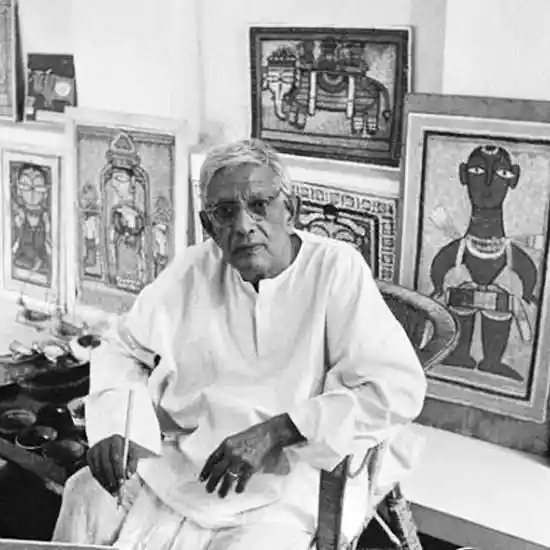The Prodigal Painter
Jamini Roy, a modernist in pre-modern India who breathed fresh air into indigenous and folk art, was born on this day.

Jamini Roy with his showcased artworks; Source: Public Domain
Quite possibly the main pioneers of the twentieth century in the realm of Indian expressive arts, Jamini Roy is known for his amazing depiction of India's society culture and rustic ethos. Such was the excellence of Roy's work that it brought him both public and worldwide acknowledgement, with his compositions being contrasted to those of popular French craftsman, Henri Matisse.
What make Roy's unmistakable style even more extraordinary is that even though he had been trained and prepared in the western traditional way of painting, he made the decision to build up his own voice as a craftsman by getting back to his underlying foundations.
Born into a family of humble means; working class landowners on April 11, 1887, Roy experienced childhood in Beliatore, an ambiguous town in Bankura area in West Bengal. Having exhibited an affinity for craftsmanship since early on, he was shipped off to the Government College of Art in Kolkata at 16 years old.
The vice-principal of this school was Abanindranath Tagore (noted craftsman, essayist and the originator of Bengal school of workmanship) and it was under him that Roy prepared in the traditional western type of scenes and studio pictures. This was the overall scholarly custom of the time and the talented Roy rushed to gain proficiency with the style.
This is the reason Roy's underlying work (in the mid 1920s) mirrored bits of Western traditional style of workmanship along with the cutting edge Bengal school of craftsmanship.
In any case, while these works were actually great, they did not have a specific energy and uniqueness. Understanding that he needed to draw motivation, not from Western practices, but rather from his own way of life, Roy started exploring different avenues regarding society craftsmanship and native materials.
By 1925, he had gotten intrigued by the Kalighat way of painting and the one of a kind highlights of its figures – large almond-formed eyes, round faces, voluptuous bodies and firm shapes.
During the 1940s, the prominence of his compositions arrived at an unsurpassed high, with his works turning out to be extremely valued belongings in both Bengali and European families.
Notwithstanding, Roy stayed immaculate by all the fame with his lone concern being his art. Out of the more than 20,000 masterpieces Roy painted during his lifetime, he sold them, once in a blue moon, at a cost no higher than ₹350.


